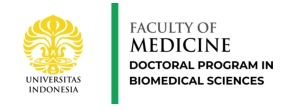by Dr. dr. Christine Tiarma Ully Banjarnahor, Sp.Onk.Rad(K)
Glioblastoma multiforme (GBM) is a type of malignant brain tumor that is very aggressive. Patients with this malignant tumor have a low survival rate despite optimal standard therapy. There are still very few molecular parameters that are used as prognostic factors, namely factors that can predict survival in GBM patients, which is the background for conducting this study. Therefore, this study aims to obtain new molecular parameters that are expected to serve as prognostic factors in GBM and can be used in routine clinical practice.
Studies show that both miRNA-328 and γ-H2AX are associated with survival rates in several types of cancer. MiRNA-328 is a type of RNA that plays an important role in various cellular processes, including cancer. Meanwhile, γ-H2AX is a sensitive marker if there is DNA double-strand damage, which is a type of protein whose activity can be affected by miRNA-328. However, currently, there are no studies that specifically analyze the role of miRNA-328 and γ-H2AX on life expectancy in GBM.
This research analyzes miRNA-328 and DNA double-strand damage which is thought to affect life expectancy in GBM by conducting observational studies on 26 GBM tissues and in vitro experimental tests on GBM cell lines (cell lines).
The results showed that low levels of miRNA-328 were found in GBM and were associated with high levels of γ-H2AX and low life expectancy. Meanwhile, analysis of γ-H2AX showed that there was a relationship between high levels of γ-H2AX and low life expectancy in GBM. These results prove that miRNA-328 has an effect on DNA double-strand damage and survival rates in GBM; Likewise, double-stranded damage to DNA affects life expectancy in GBM. In addition, the activation of the PI3K/Akt signaling pathway which is associated with DNA double-strand damage and plays an important role in inhibiting apoptosis (GBM cell death) was also shown in this study where this research had never been done before. Based on experimental tests, the results obtained are by studies on the GBM network so it further supports the hypothesis of this study.
Thus, based on the results obtained, miRNA-328 and γ-H2AX have the potential to be used as molecular parameters in routine clinical practice to determine the prognosis in GBM patients. In addition, it is hoped that by knowing the potential of miRNA-328 and γ-H2AX as prognostic factors, in the future it will be possible to develop miRNA-328 as a therapy for GBM so that it can increase the life expectancy of GBM patients.

